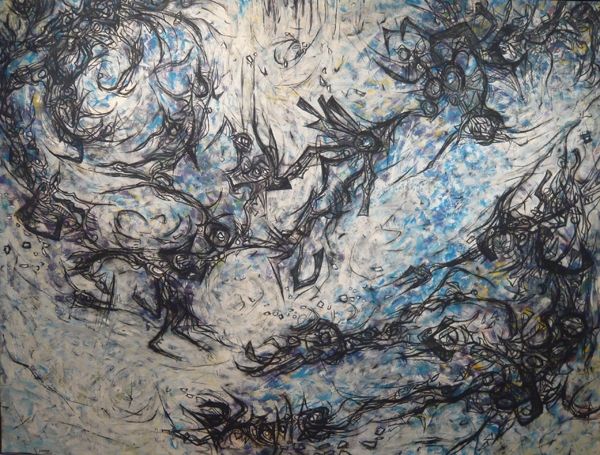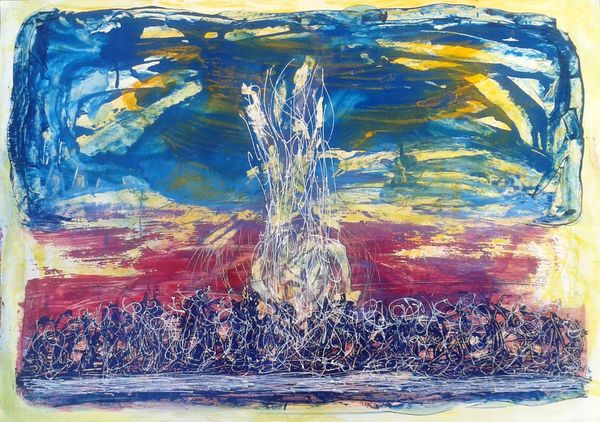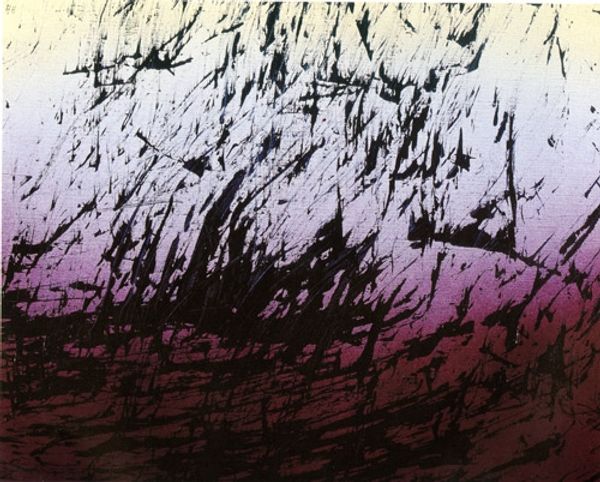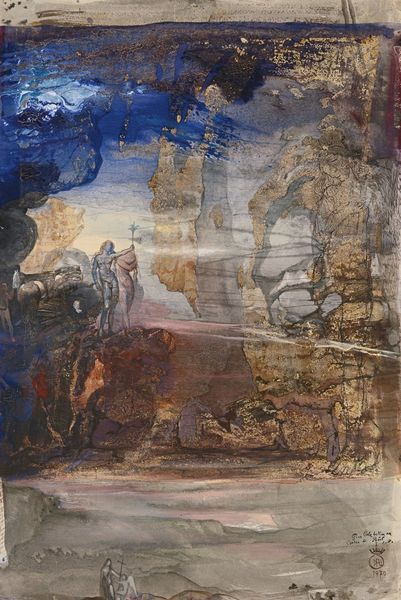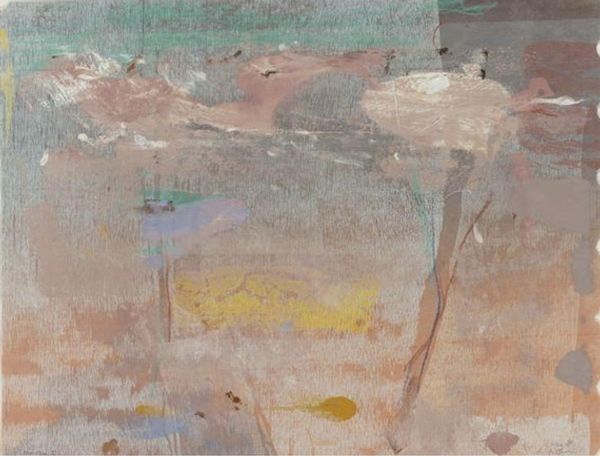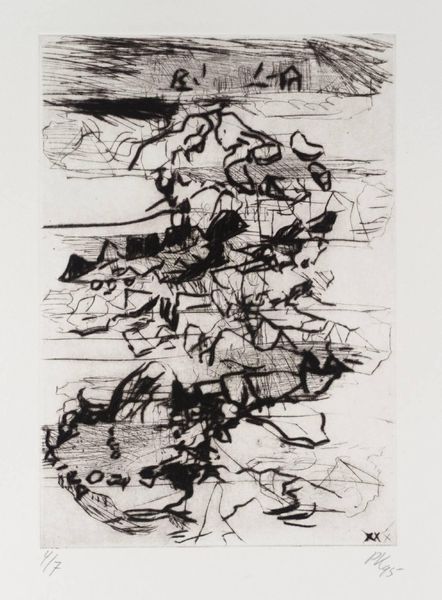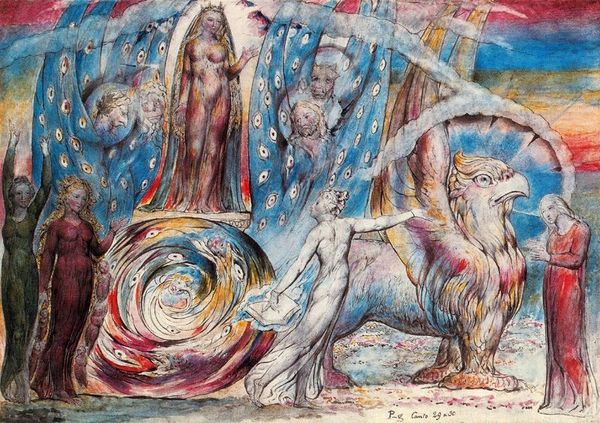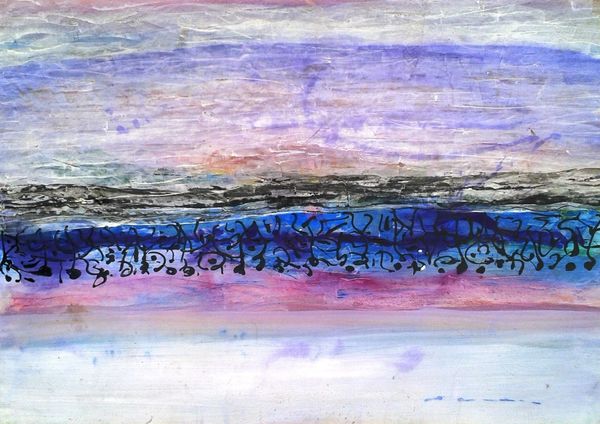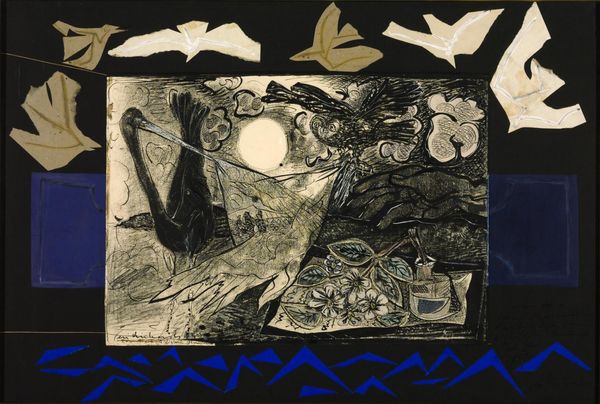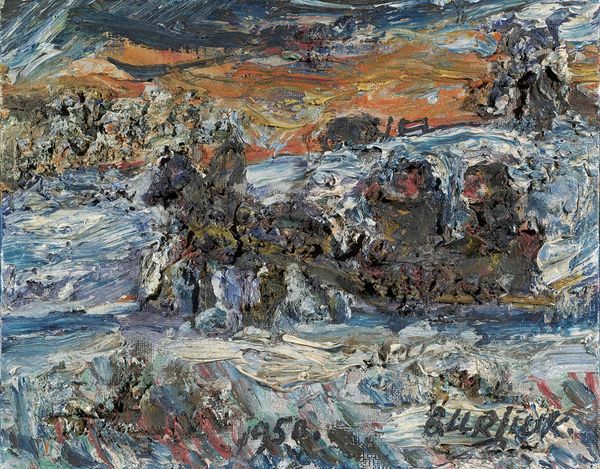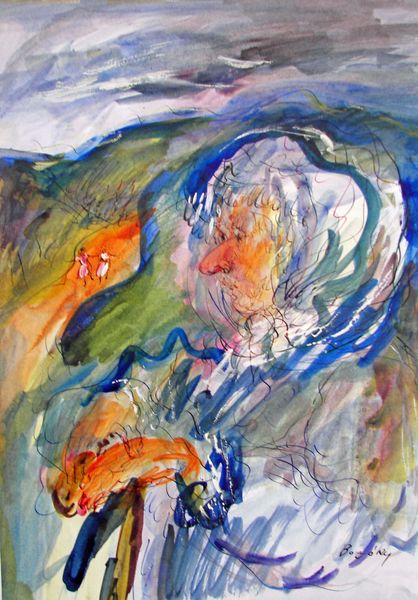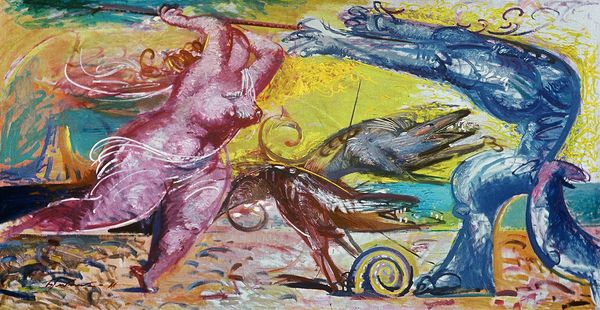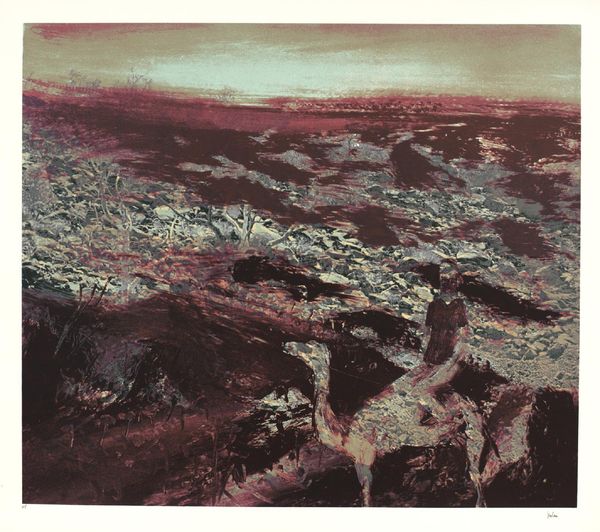
Lt. Sydney A. Cloman, First Infantry, on His Horse on the Wounded Knee Battleground 2010
0:00
0:00
painting, watercolor
#
contemporary
#
narrative-art
#
painting
#
landscape
#
indigenism
#
figuration
#
watercolor
#
history-painting
Copyright: Billy Childish,Fair Use
Editor: This is "Lt. Sydney A. Cloman, First Infantry, on His Horse on the Wounded Knee Battleground," a 2010 watercolor by Billy Childish. The image is... unsettling. The swirls of color, almost like water, seem to pull at the figures scattered on the ground, and there's a stark contrast between the calm rider and the chaos around him. How do you interpret this work? Curator: This piece demands that we confront a very uncomfortable history. Childish places us at the site of the Wounded Knee Massacre, an event of immense significance in the ongoing narrative of Indigenous resistance and the brutal realities of American expansionism. Consider the seemingly serene landscape painting tradition, juxtaposed with the representation of violence. What does this juxtaposition reveal? Editor: It makes the violence feel...ordinary, almost expected within the landscape. But the "indigenism" tag seems...complicated here. Curator: Exactly. The "indigenism" tag is useful but should prompt scrutiny. Is Childish simply representing a historical event, or is he actively engaging with Indigenous perspectives and struggles? We must consider the artist's positionality and whether the work risks appropriation or tokenism. How does his depiction serve, or potentially disserve, the cause of historical truth and reconciliation? Editor: So, even with its anti-establishment feel, we need to question whether it challenges or reinforces power structures? Curator: Precisely. This artwork serves as a poignant reminder that our interpretations of art cannot be divorced from their socio-political contexts. By probing these historical narratives and understanding the complexities of representation, we engage in critical dialogues that challenge conventional perceptions. What new understandings might this bring? Editor: Thinking about the gaze of the lieutenant compared to the fallen...It definitely gives me a lot to think about. Curator: And that's the power of art - it's a dialogue, not a monologue.
Comments
No comments
Be the first to comment and join the conversation on the ultimate creative platform.
